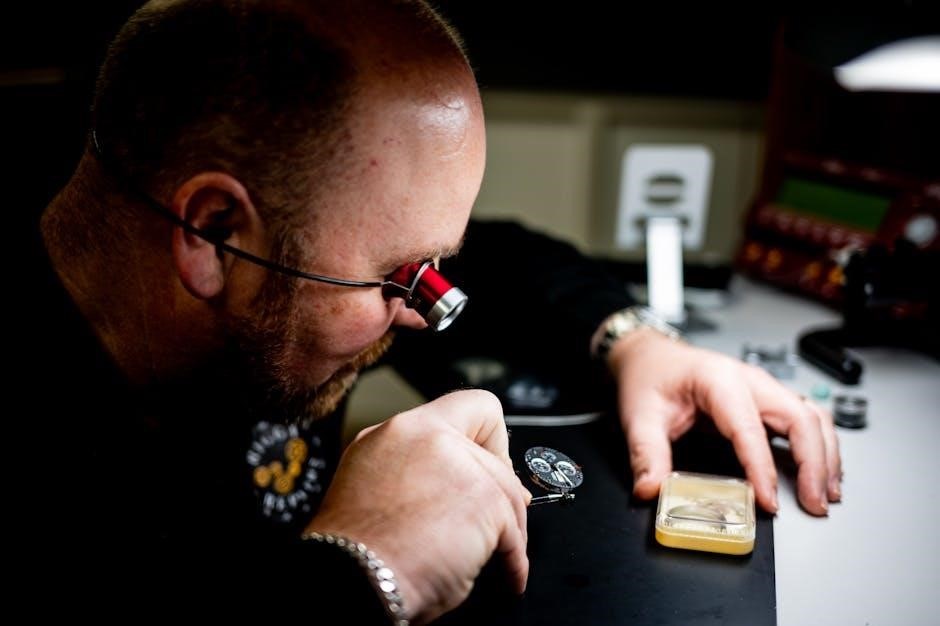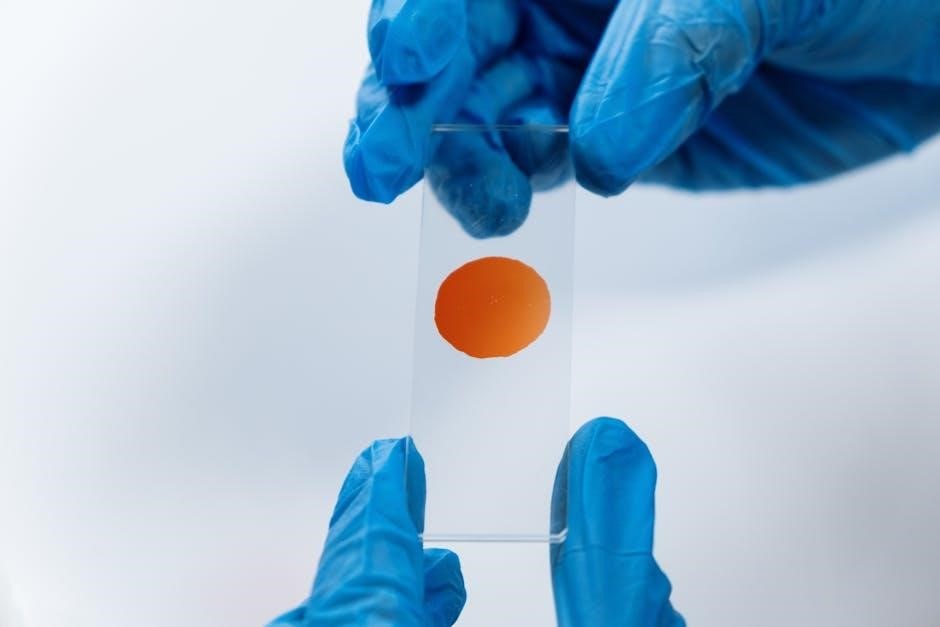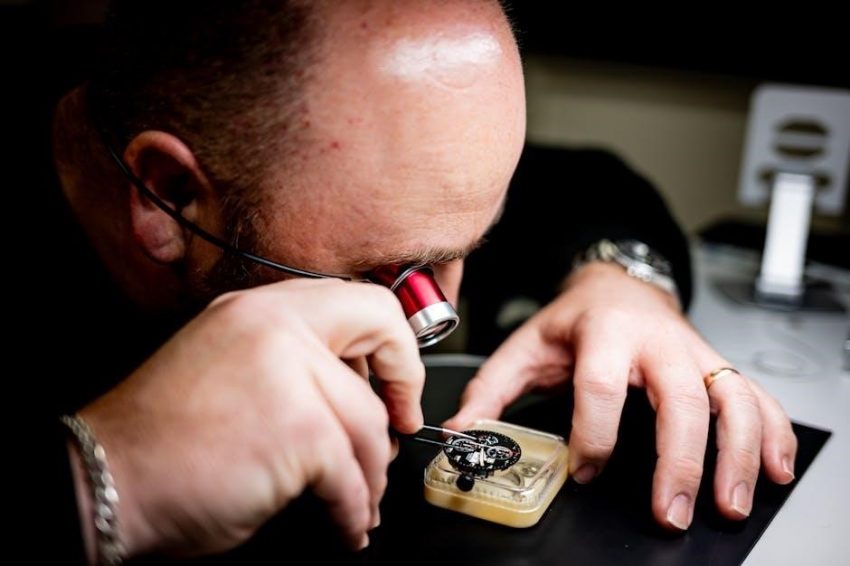The Bausch & Lomb ISTx8L Microscope is a high-performance optical instrument designed for precise observation and analysis‚ offering advanced features for scientific and industrial applications.
Overview of the ISTx8L Model
The Bausch & Lomb ISTx8L Microscope is a high-performance optical instrument designed for precision and versatility in laboratory and industrial settings. Known for its advanced optical design‚ the ISTx8L offers superior imaging capabilities and ergonomic construction. Its robust build ensures durability‚ while its flexible design allows for easy adaptation to various applications. This microscope is ideal for detailed observations‚ making it a reliable tool for professionals and researchers seeking accuracy and efficiency in their work.
Importance of the Manual for Effective Use
The manual is essential for understanding the ISTx8L’s features‚ proper setup‚ and operation. It provides detailed instructions for maintenance‚ troubleshooting‚ and safety precautions‚ ensuring optimal performance and longevity. By following the manual‚ users can avoid damage and ensure accurate results. It also highlights safety guidelines to protect both the user and the instrument. Referencing the manual regularly guarantees efficient operation and maximizes the microscope’s capabilities for precise and reliable outcomes in various scientific applications.

Key Features of the Bausch & Lomb ISTx8L Microscope
The ISTx8L features a cutting-edge optical system‚ ensuring high-resolution imaging and clarity. Its robust construction and ergonomic design enhance user comfort during extended use.
Advanced Optical Design
The ISTx8L microscope boasts an advanced optical system‚ delivering high-resolution imaging and exceptional clarity. Its achromatic objectives provide sharp‚ distortion-free images‚ while the precisely engineered eyepieces ensure comfortable viewing. The microscope’s optical design is optimized for both brightfield and darkfield illumination‚ enhancing contrast and detail. Ergonomic features‚ such as adjustable interpupillary distance and a nosepiece‚ accommodate diverse user needs. This design ensures precise focus control and minimizes eye strain‚ making it ideal for extended use in educational and laboratory settings. Built to last‚ the ISTx8L aligns with Bausch & Lomb’s commitment to excellence in optical instrumentation.
Flexibility and Durability
The ISTx8L microscope is renowned for its flexibility and durability‚ making it a reliable choice for demanding environments. Its robust construction ensures long-lasting performance‚ while interchangeable parts allow customization to meet specific needs. The ergonomic design minimizes user fatigue‚ and the sturdy base provides stability during operation. Durable materials and precise engineering ensure resistance to wear and tear. This microscope is designed to adapt to various applications‚ offering ease of maintenance and versatility for both educational and professional settings. Its durability and flexibility make it a trusted tool for consistent results.
Specialized Components
The ISTx8L microscope features specialized components designed for enhanced performance. Its high-quality optical system ensures crisp‚ detailed imagery‚ while the Power Pod technology allows for quick magnification changes. The stage is engineered for precision‚ accommodating various sample sizes and types. The microscope also includes a built-in illumination system with adjustable intensity for optimal viewing. Durable‚ long-lasting components and a sealed optical system minimize maintenance and ensure reliability. These specialized parts work together to provide a superior microscopy experience‚ catering to both professional and educational needs effectively.
Setting Up the ISTx8L Microscope
Setting up the ISTx8L microscope involves unpacking‚ assembling‚ and positioning. Follow the manual for proper alignment and securing to ensure stability and optimal performance during use.
Unpacking and Initial Inspection
Begin by carefully unpacking the ISTx8L microscope from its shipping container. Inspect for any visible damage or defects. Ensure all components‚ including the microscope‚ stage‚ eyepieces‚ and accessories‚ are included. Compare the contents with the manual’s packing list to verify completeness. Conduct a visual inspection of optical surfaces and mechanical parts for cleanliness and proper assembly. If any issues are found‚ contact Bausch & Lomb support immediately. Refer to the manual for detailed unpacking and inspection procedures to ensure proper handling and preparation for use.
Assembling the Microscope
Place the microscope on a stable‚ flat surface. Attach the base securely‚ ensuring all components are properly aligned and locked in place. Follow the manual’s instructions for connecting the optical tube‚ stage‚ and focus knobs. Gently insert the eyepieces into the eyepiece holders‚ ensuring they are snug and evenly aligned. Connect the illumination source‚ such as the LED light‚ and ensure it is properly seated. Refer to the manual for specific torque settings and alignment guidelines. Double-check all connections for stability before proceeding to use the microscope.
Positioning and Securing the Microscope
Place the microscope on a flat‚ stable surface‚ ensuring it is level and evenly balanced. Align the optical axis perpendicular to the stage. Secure the microscope using the provided anchor points or anti-vibration pads to prevent movement. Ensure proper clearance around the instrument for comfortable operation. Double-check the balance by gently tilting the microscope; it should remain stable. Clean the area around the microscope to avoid contamination during use. Follow the manual’s guidelines for optimal positioning and stability.
Operating the ISTx8L Microscope
The ISTx8L operates smoothly‚ featuring an ergonomic design for efficient use. Utilize the stage controls and focus adjustment for precise specimen observation. Adjust brightness and contrast for clarity‚ ensuring optimal viewing and accurate results.
Focusing and Adjusting the Microscope
Focusing the ISTx8L involves placing the specimen on the stage and adjusting the focus knobs. Start with the coarse focus for initial clarity‚ then fine-tune using the fine focus knob. Ensure the specimen is centered under the objective lens for optimal viewing. Adjust the brightness and contrast settings as needed to enhance image quality. Regularly check and maintain proper alignment to ensure precise focus and accurate observations. Proper adjustment ensures clear‚ detailed images for effective analysis.
Changing Magnification
To change magnification on the ISTx8L‚ rotate the magnification selector to the desired objective lens. Ensure the specimen is centered under the new objective to maintain focus. The microscope features interchangeable eyepieces and objectives‚ allowing easy switching between magnification levels. Always adjust the focus knobs after changing magnification to achieve a sharp image. Proper alignment ensures optimal viewing and prevents damage to the microscope or specimen. Follow the manual’s guidelines for secure and precise magnification changes.
Using the Stage and Focus Knobs
The stage and focus knobs are essential for precise specimen positioning and sharp imaging. To use them‚ first adjust the coarse focus knob to bring the specimen into general focus. Then‚ use the fine focus knob for optimal clarity. The stage knobs allow horizontal and vertical movement of the slide‚ ensuring the specimen is centered under the objective lens. Always handle the knobs gently to avoid damaging the microscope or the sample. Proper use ensures accurate observations and extends the microscope’s lifespan. Follow the manual for detailed guidance on effective operation.

Maintenance and Care
Regular cleaning prevents contamination and ensures optimal performance. Store the microscope in a dry‚ cool place to maintain accuracy. Schedule routine maintenance for longevity and reliability. Consult the manual for detailed care instructions to preserve the instrument’s condition and functionality over time.
Cleaning the Microscope
Use a soft‚ dry cloth to wipe down the microscope‚ removing dust and debris. For stubborn spots‚ dampen the cloth with distilled water or a mild cleaning solution. Avoid harsh chemicals or abrasive materials that may damage surfaces. Gently clean lenses with a microfiber cloth and lens cleaning tissue‚ ensuring no streaks remain. Regular cleaning prevents contamination and maintains optical clarity. Always dry the microscope thoroughly after cleaning to prevent moisture damage. Refer to the manual for specific cleaning instructions tailored to the ISTx8L model.
Storage Recommendations
Store the ISTx8L Microscope in a cool‚ dry place away from direct sunlight and moisture; Use the original packaging or a sturdy‚ dust-proof case to protect the instrument. Ensure the microscope is covered when not in use to prevent dust accumulation. Avoid exposing it to extreme temperatures or humidity‚ as this may affect optical performance. Keep the microscope upright to prevent damage to internal components. Regularly inspect stored accessories and ensure all parts are secure before and after storage.
Scheduled Maintenance
Regular maintenance ensures optimal performance of the ISTx8L Microscope. Schedule periodic checks to inspect for dust or debris on optical surfaces. Clean mechanical components and ensure all parts are securely tightened. Follow the manufacturer’s recommended maintenance schedule to prevent wear and tear. Replace any worn-out parts promptly to maintain precision. Use only original Bausch & Lomb accessories to ensure compatibility and performance. Proper maintenance extends the microscope’s lifespan and guarantees accurate results in all applications.

Troubleshooting Common Issues
Addressing issues like blurry images or insufficient light? Consult the manual for guidance on resolving focusing problems‚ illumination concerns‚ and mechanical malfunctions to ensure optimal performance.
Resolving Focusing Problems
If the microscope image appears blurry or out of focus‚ ensure the objective lens is properly aligned with the sample. Check that the light source is optimized and the condenser is correctly positioned. Clean the lenses and stage to eliminate debris. Adjust the focus knobs gently‚ starting with the coarse adjustment‚ then fine-tuning for clarity. Verify that the stage is securely locked to prevent movement during focusing. If issues persist‚ consult the manual for advanced troubleshooting steps.
Addressing Illumination Concerns
If the microscope image appears dim or uneven‚ check the light source settings. Ensure the power is turned on and the brightness is adjusted appropriately. Verify that the condenser is properly aligned and clean. Inspect the mirrors for dust or debris and clean them gently with a soft cloth. If using an external light source‚ confirm it is securely connected. Replace the bulb if it is faulty or expired. Proper illumination is crucial for clear observation‚ so addressing these issues promptly ensures optimal performance.
Handling Mechanical Malfunctions
If mechanical issues arise‚ such as stuck focus knobs or stage movement problems‚ first clean the affected areas with a soft cloth and mild solvent. Lubricate moving parts if necessary‚ using only recommended products. Inspect for damage or misalignment and adjust components gently. If issues persist‚ consult the manual for troubleshooting guides or contact Bausch & Lomb support for professional assistance. Regular maintenance and proper handling can prevent many mechanical malfunctions‚ ensuring smooth operation and longevity of the microscope.
Safety Precautions
Always handle the microscope with care‚ avoiding excessive force or improper techniques. Use only genuine Bausch & Lomb parts to ensure safety and optimal performance. Follow all safety guidelines provided in the manual to minimize risks and maintain a secure working environment.
General Safety Guidelines
To ensure safe operation‚ always follow the manufacturer’s instructions provided in the manual. Handle the microscope with care to avoid damage or personal injury. Avoid using unauthorized accessories or parts‚ as they may compromise safety and performance. Regularly inspect the instrument for wear or damage and address any issues promptly. Keep the workspace clean and well-lit to prevent accidents. Never leave the microscope unattended while in use‚ and ensure it is properly secured to prevent tipping. Follow all electrical safety precautions‚ such as avoiding exposure to water or extreme temperatures. Properly train all users before allowing them to operate the microscope independently. By adhering to these guidelines‚ you can maintain a safe and effective working environment for all users.
Proper Handling Techniques
Handle the microscope with care to prevent damage. Lift by the base or frame‚ not the arm or eyepieces. Avoid extreme temperatures and moisture. Use only approved cleaning materials to protect optics. Store in a dry‚ cool place when not in use. Follow manual guidelines for moving or transporting. Secure all adjustments before moving. Avoid unauthorized modifications. Regularly inspect for wear and tear to ensure optimal function and longevity.

